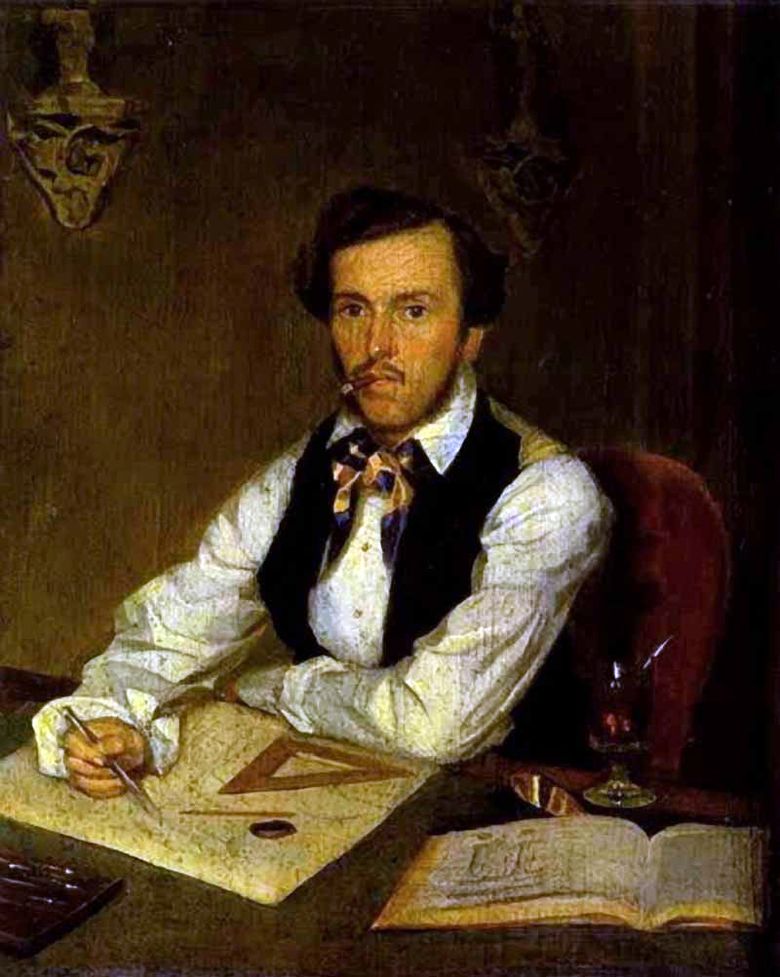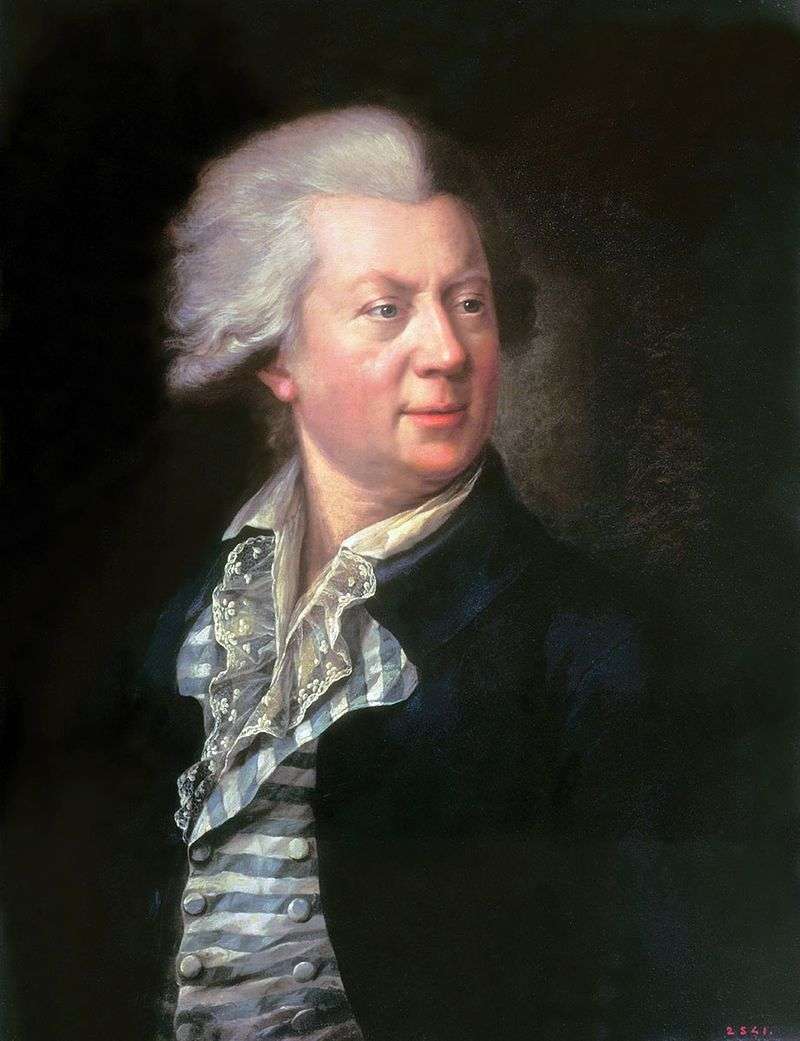
This portrait was taken to the Russian Museum from the former museum of the Life Guards regiment of Finland, which was once donated by one of the officers. The name of the image, as you see, was already forgotten by that time. In the exposition of the Russian Museum, he is a portrait of an unknown architect. The attribution of two other portraits, made recently, now allows him to name his name. Unknown architect – Karl-August A. Beine.
In 1829 Karl Beine, the “son of a master of foreign castle business”, invited to Russia and serving at the Izhevsk Arms Factory, tried to enter the Academy of Arts. He was not adopted by his youth and began attending classes of the Academy as an outsider. Then he became an assistant to Alexander Bryullov in the work on the drawings and in the construction of the church in Pargolovo. In the fall of 1836, K. Beyne received the title of artist. In September 1839 “free artist Karl Beine for the program of the barracks of the Guards Regiment” was awarded the Gold Medal of the first dignity. After the fire in the Winter Palace in 1837, according to the projects of Alexander Bryullov, Big and Pompeian canteens were finished. Karl Beine is his assistant in all works.
A drawing on the architect’s desk on Fedotov’s portrait – a fragment of the wall of the Great Dining Room, which still exists in its original form. In 1841, the Academy sent Karl Beyne a pensioner “to foreign lands… for improvement.” During the years of retirement in Italy traveled a lot around the country, studied Rome and Pompeii. Visited Spain, Syria, Egypt, Greece. I measured the structure of the Acropolis. In Sicily and in Istanbul he made sketches and measurements of Byzantine churches. Watercolors, which he sent to Russia for exhibitions, the Council of the Academy invariably found “excellent” and acquired for the cabinet prints. By the beginning of the summer of 1849 K. Beine returned to St. Petersburg. Around 1850, he was again sent abroad, the Russian section of the World Exhibition was to be registered in London.
In Russia, he returned in April 1852 and was “ranked in the Cabinet of His Majesty’s architect.” Thus, the portrait of K. Beyne could be written either in the summer or autumn of 1849, when he was in Petersburg, or in April-May 1852.
 Portrait d’un architecte – Pavel Fedotov
Portrait d’un architecte – Pavel Fedotov Retrato de un arquitecto – Pavel Fedotov
Retrato de un arquitecto – Pavel Fedotov Portrait of the architect Yu. M. Felten by Stepan Shchukin
Portrait of the architect Yu. M. Felten by Stepan Shchukin Portrait of the architect Adrian Dmitrievich Zakharov by Stepan Shchukin
Portrait of the architect Adrian Dmitrievich Zakharov by Stepan Shchukin Portrait of the architect KA Ton by Karl Bryullov
Portrait of the architect KA Ton by Karl Bryullov Portrait of A. Bryullov by Karl Bryullov
Portrait of A. Bryullov by Karl Bryullov Portrait of the father by Pavel Fedotov
Portrait of the father by Pavel Fedotov Portrait of MM Rodivanovsky by Pavel Fedotov
Portrait of MM Rodivanovsky by Pavel Fedotov